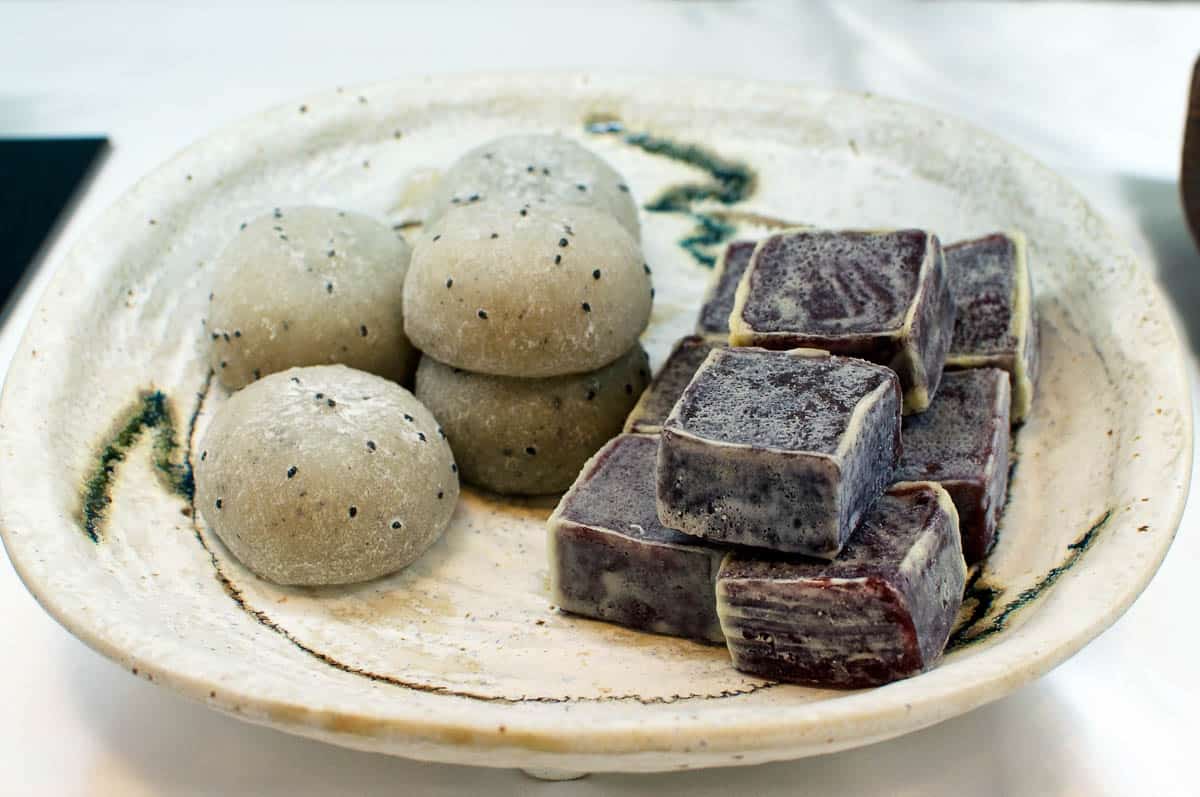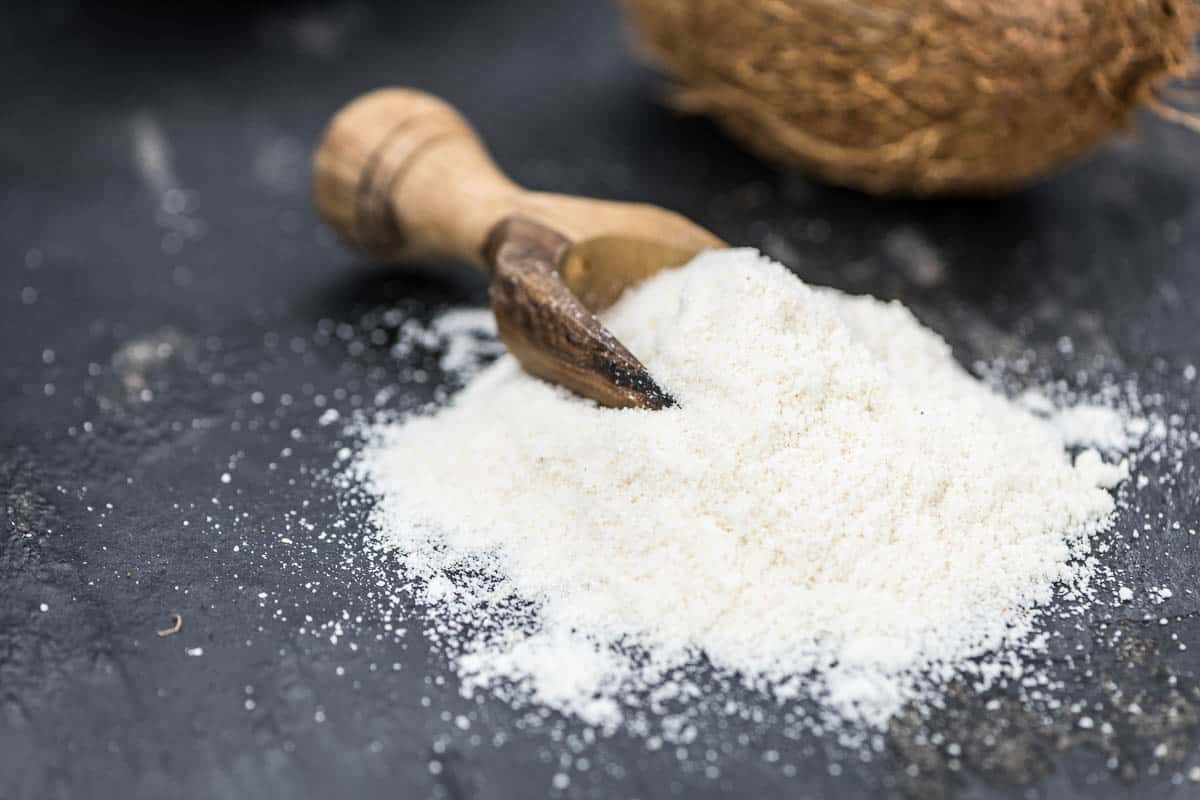Do you ever get aggravated for spending so much time shopping and then returning home only to discover that you've forgotten something? Sometimes, you may forget that the item is not available at your local supermarket when you need it.
If you are looking for a sweet rice flour substitute. You might be able to find what you're looking for at your local grocery store. Depending on the type of rice you're using, you may be able to substitute short-grain glutinous rice for sweet rice flour.
That's when it's good to know what you can use as alternatives or substitutes for the missing product. So this article will talk about sweet rice flour and what you can use instead.

Jump to:
What is Sweet Rice Flour?
Glutinous rice flour, also well known as sweet rice flour, is a gluten-free flour produced from short-grain white rice with soft, sticky qualities and no actual gluten.
It's made of the same rice as sushi, which might help you understand how sticky it can be and how well it will cling to other ingredients.
Sweet rice flour, also known as glutinous rice flour, is starchy starch commonly used in Asian cuisine. It's the mochi recipe's signature ingredient, and it can be eaten on its own or used to create innovative desserts.

Sweet Rice Flour vs Rice Flour
Rice flour is made from long- or medium-grain rice, which is the type of rice that most of us have on hand. It has some thickening characteristics, but it's best utilized in gluten-free baking flour blends. Rice flour, whether white or brown, has a similar texture and usage.
Short-grain glutinous rice, sometimes known as "sticky rice," is crushed into sweet rice flour. But don't worry: just because it's called glutinous rice doesn't mean it's gluten-free. Rather, this rice contains significantly more starch than other types of rice, making it an excellent thickening agent for sauces and a binder for mochi and noodles.
Also, don't be fooled by the fact that it's labeled "sweet" rice. It has a light, almost milky flavor that isn't overly sweet. Sometimes labeled Mochiko flour, it can be found in Asian grocery stores.

Sweet Rice Flour Uses
Sticky, glutinous, and starchy are the primary characteristics of sweet rice flour. However, the end result is a chewy yet soft and moist texture that we're accustomed to in gluten-based baked products.
Sweet rice flour has several advantages that must be handled with care since it's easy to produce soggy, spongey baked items if you're unfamiliar with it.
Sweet rice flour is an increasingly popular gluten-free baking ingredient because it can mimic the characteristics of gluten. It's commonly combined with other types of flour, notably also gluten-free.
Sweet glutinous rice flour can be used in place of all-purpose flour in many dishes (about 40% sweet glutinous rice flour to provide binding).
In addition, sweet rice flour, usually found in Asian cuisine, especially desserts like mochi and traditional dishes like glutinous rice balls. It may also be utilized for savory foods.
Sweet rice flour is also ideal for making delicate and sturdy quick bread because it's a thickener. It should not, however, be used in yeasted bread. It's also the basis for rice noodles.
We'll go through the various replacements and how they perform under different circumstances now that you know what sweet rice flour is capable of.

What Does Sweet Rice Flour Taste Like?
Sweet rice flour has a pleasant flavor that is not very distinctive from white rice flour. Even though sweet rice flour has a somewhat sweet flavor, it has a mild taste and blends well with whatever you're cooking.
You can quickly tell what flavor is in glutinous rice flour by comparing it to rice noodles made from sweet rice flour.

Best Substitutes for Sweet Rice Flour
When it comes to replacing sweet rice flour in a recipe, your primary guide should be the type of dish you're making. Starch-like tapioca or potato will give you the best results in most cases. However, there are some desserts, like mochi, where those substitutes might not work as well.
In those instances, you might want to try using arrowroot powder instead. No matter what you choose, add a little extra sugar to the recipe to account for the loss of sweetness from the rice flour. With a bit of trial and error, you'll be able to find the perfect replacement for sweet rice flour in any dish.
In some situations, almond flour or sorghum flour will produce better results. Cornstarch and coconut flour can be used in most recipes if you're in a bind; however, we'll take a closer look at how to use them.

Tapioca Flour
Tapioca starch, or tapioca flour, is a good substitute for sweet rice flour because it has many of the same qualities and can be used in the same quantity as your recipe demands.
It is made from yuca or cassava plants and has a similar starchy and sticky texture to sweet rice flour. It absorbs water in the same way as sweet rice flour and gives a somewhat chewy texture.
Sweet rice flour has a somewhat sweeter flavor than tapioca starch, which is essentially flavorless. You may add a little sugar to make up for it, but otherwise, you can use them interchangeably.

Potato Starch
Potato starch is a starch that comes from potatoes. The starch from potatoes is extracted as a fine powder with very little taste.
The primary purpose of potato starch is to provide texture to a dish. It's commonly used as a thickener and moisture retention agent in baked goods, similar to white rice flour.
It's a lot like tapioca starch in that it can be used in place of white rice flour in precisely the exact amounts, but due to its lack of taste, you may want to add a little extra sugar or another sweetener.

Almond Flour
In several ways, almond flour differs from sweet rice flour. N nevertheless, it is gluten-free and low in carbohydrates, making it an excellent substitute for most sweet rice flour recipes.
Almond flour is more nutritious than sweet rice flour because it is higher in protein and has a wider variety of vitamins and minerals.
Compared to glutinous rice flour, it is also not nearly as sticky. If you're replacing sweet rice flour with almond flour, you'll need to add extra ingredients to compensate for binding strength.
Although it appears to be the same, regular rice flour has a somewhat milder flavor than almond flour. Of course, almonds have a more distinct flavor profile than rice flour, so you'll notice a difference in taste; however, if you enjoy the nutty flavor of almonds, this will undoubtedly be a plus.
You may also use a touch of added sugar if necessary. You'll need 1.5 cups of almond flour for each cup of sweet rice flour when using almond flour instead of sweet rice flour in any recipe.

Sorghum Flour
Another gluten-free option is sorghum flour, which can be used as a substitute for sweet rice flour. It has a high value in terms of nutrition, and as such, it is becoming increasingly popular in the health food industry.
Sorghum flour has a light sweetness to it, but it's quite mild and comparable to sweet rice flour. It isn't as clingy, though, so you'll need to use some type of binding agent in the recipe.
In most recipes, you can substitute equal amounts of sweet rice flour and sorghum flour for one another. However, you could add extra sorghum flour according to the recipe to obtain the correct consistency.
Begin with one teaspoon at a time and increase as needed.
In other recipes, you might discover that increasing the liquid a bit more solves the sticking problem rather than requiring additional binding chemicals. However, this may change based on the recipe.

Brown Rice Flour
You're in the middle of making a recipe that calls for sweet rice flour, and you realize you don't have any. What can you use as a substitute? Luckily, brown rice flour is an acceptable substitute in most cases. It's not quite as fine as sweet rice flour, so your dish may be slightly less smooth.
You can combat this by sifting the brown rice flour before using it. Brown rice flour is also a bit heavier than sweet rice flour, so it may not work as well as a leavening agent. However, it's perfectly fine to use as a thickening agent. In short, if you find yourself without sweet rice flour, brown rice flour is a good option.

Coconut Flour
Coconut flour is gluten-free and a very lightweight, fine powder that resembles sweet white rice flour, making it suitable for use in most recipes as a stand-in. In addition, coconut flour has a mild coconut flavor and is sweeter than sweet rice flour.
Because coconut flour is less sticky than sweet rice flour, you may need to use a binding agent or modify the liquid amount to obtain the desired sticky consistency for your recipe.
You can substitute 1.5 cups of coconut flour for every 1 cup of sweet rice flour.

Cornstarch
Cornstarch is an acceptable alternative if you're used to thickening a sauce using sweet rice flour.
To thicken a liquid, use approximately two tablespoons of sweet rice flour per 1 cup of liquid. You may begin with the same amount of cornstarch and add more as needed.
With or without heat, rice flour will thicken the liquid rather quickly. On the other hand, cornstarch thickens as it heats up, so don't add any more until you're sure it's required.
You can blend cornstarch with most liquids, but it's best to whisk it into cold liquid and slowly add the thickened mixture to the already heated liquid to avoid lumps.
Cornstarch produces a glossy sheen that is not present when sweet rice flour is used.

Can I Make My Own Rice Flour?
You can simply grind short-grain rice in a food processor until it forms a fine powder. This can be done with either white or brown rice, and the end result will be flour that can be used in many different recipes.
It will most likely not result in a super fine grind that would come in a package of store bought sweet rice flour, but it can work in a pinch.

Conclusion
That concludes our guide to substitutes for sweet rice flour. As you can see, there are several viable options depending on what you have on hand and what flavor profile you’re going for. All of them will give you a similar result – be sure to follow the recipe closely to get the same texture and flavor as if you had used sweet rice flour.
So, the next time you're in the middle of a baking project and realize you're out of sweet rice flour, don't panic – reach for one of these substitutes, and you'll be good to go. Happy baking!
Do you have any other tried and true substitution recommendations? Please let me know in the comments!






Leave a Reply